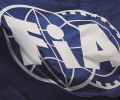World Motor Sport Council

The Goodwood Motor Circuit, part of the 12,000 acre Goodwood Estate, originally opened its gates to the public in September 1948 to host Britain’s first post-war motor race meeting at a permanent venue.
The second World Motor Sport Council meeting of 2013 concluded the inaugural FIA Sport Conference Week, a new event on the Federation’s calendar developed to provide a global platform of networking and business exchange for the motor sport community.
Jean Todt thanked Lord March and the staff at Goodwood for their hospitality in the magnificent surroundings of the Goodwood Estate, which provided an excellent venue for the first Sport Conference Week. With Delegates from more than 70 countries in attendance, the event was universally hailed by the motor sport community as a huge success.
The following decisions were taken by the World Motor Sport Council:
FIA FORMULA ONE WORLD CHAMPIONSHIP
The FIA President and the Commercial Rights Holder advised that negotiations regarding the Concorde Agreement were close to conclusion with the intention the contract between the FIA and FOM will be signed in the near future.
The following summarises the changes made to the 2014 Sporting Regulations:
Further to a request from Mercedes, it will be permitted to supply engines to a maximum of four Formula One teams in 2014.
A penalty point system for drivers will be introduced. If a driver accumulates more than 12 points he will be banned from the next race. Points will stay on the driver’s licence for 12 months. The amount of points a driver may be given for infringements will vary from one to three depending upon the severity of the offence.
The procedure for a driver to be given the chance to give back any advantage he may have gained by leaving the track has been adopted.
A significant reduction in the amount of wind tunnel testing and CFD work has been imposed to help reduce costs and potentially allow two teams to share one wind tunnel.
Four two-day track tests will be allowed in season in place of the current eight one-day promotional days and the three-day young driver test. These will take place at tracks in Europe on the Tuesday and Wednesday after a race in order to ensure minimal additional resources are necessary.
Track testing will now also be permitted in January 2014 in order to allow earlier testing of the new power units.
For safety reasons all team personnel working on a car in a race pit stop will be required to wear head protection.
Each driver will be provided with one extra set of tyres for use only during the first 30 minutes of the first practice session on Friday, to encourage teams to take to the track at that time without having to worry about using valuable tyre wear.
A number of new regulations have been confirmed to govern the new, far more complex power units. It is agreed that only five power units may be used by each driver for the whole season. Any use of an additional complete power unit will result in that driver having to start the race from the pit lane. Any changes of individual elements above the permitted five, such as turbocharger, MGU or Energy Store, will result in a 10 grid place penalty.
No manufacturer will be allowed to homologate more than one power unit during the homologation period from 2014-2020. Changes to the homologated unit will continue to be permitted for installation, reliability or cost saving reasons.
Drivers must now use a gearbox for six consecutive events, an increase from the current five.
No car may use more than 100kg of fuel for the race, from the time the lights go out at the start of the race to the chequered flag. This will be monitored by the use of an FIA approved fuel flow meter.
The pit lane speed limit, which is currently set at 60km/h for the free practice sessions and 100km/h for the qualifying practice and race (60km/h for the whole event in Melbourne, Monaco and Singapore), has been amended so it is set at 80km/h for the whole event (except the three races mentioned which would stay at 60km/h for the whole event). This is for safety reasons, as most accidents happen during the race when the speed limit is higher; drivers also have very little chance to practice stopping from 100km/h until the race.
The following summarises the changes made to the 2014 Technical Regulations:
Measures have been put in place to ensure that the cars do not incorporate a step in the chassis behind the nose. These changes will also ensure that a genuine low nose, introduced for safety reasons, is always used.
The minimum weight limit has been raised by 5kg, as the power unit is now likely to weigh more than originally expected. The weight distribution has also been changed accordingly.
Electronic control of the rear brake circuit is permitted in order to ensure consistent braking whilst energy is being recovered.
In order to ensure that side impact structures are more useful in an oblique impact and more consistent, they will become standard items made to a strictly laid out manufacturing process and fitted to the cars identically. The impact tests currently carried out will be replaced by static load push-off tests and squeeze tests. This will also help reduce costs as no team will need to develop their own structures.
In order to ensure that the cockpit rims either side of the driver’s head are stronger, the amount of deflection during the static load tests has been reduced from 20mm to 5mm.
FIA WORLD RALLY CHAMPIONSHIP AND RALLYING
With immediate effect and for budget reasons, WRC Team and WRC 2 entrants are not obliged to use the latest ‘joker’ parts when competing in WRC events.
In order to promote the entry of R-GT cars in FIA rallies, with immediate effect tuners will be permitted to develop cars, in accordance with the criteria defining eligible cars. The FIA will issue a technical passport, allowing the car to be eligible for events accepting R-GT cars.
With effect from 1 January 2014:
As a general rule, organisers of WRC events must ensure a minimum of 25% competitive special stage distance in relation to the overall distance of the event.
Manufacturer and WRC Team cars from the same entrant will be permitted to enter Flexi-Service at the same time, having their service times counted independently.
In order to give more flexibility, WRC Teams will no longer be obliged to nominate a tyre manufacturer for the season.
In order to extend the life of World Rally Cars, manufacturers will be permitted to re-homologate 2011, 2012 and 2013 cars without any modification, except one single chassis and engine joker for 2014. In order to facilitate the replacement of S2000 Rally cars with Group R5, S2000 regulations will not be continued after 2013 and will be replaced by new R5 homologation regulations. Existing S2000 homologations will be frozen and may no longer receive an extension for the rest of their homologation period, except for one single engine and chassis joker.
The minimum weight of R5 cars has been increased from 1200 to 1230 kg to avoid the use of expensive options and keep the cost of the complete car within the stated limit.
From 2015, classes R1, R2 and R3 will be permitted to use super-charged engines, in line with the evolution of series engines.
With immediate effect, the number of permitted tyres for events in the FIA European Rally Championship has been set at 20, plus an additional four if shakedown is included in the itinerary, for cars in Classes 2 and 3. In addition, hand cutting will not be permitted, unless authorised in very special circumstances by the Stewards for safety reasons.
From 2014, the number of coefficients allocated to the events in the European Rally Cup has been reduced to three, namely 20, 15 and 10.
FIA WORLD ENDURANCE CHAMPIONSHIP
In order to preserve the historic date of the Le Mans 24 Hours, which this year celebrated its 90th edition, the date of 14/15 June 2014 has been retained to ensure that a Formula One Grand Prix is not hosted the same weekend.
FIA WORLD TOURING CAR CHAMPIONSHIP
Following the cancellation of a race on 28 July, it is confirmed another race will take place on 4 August at Termas de Rio Hondo in Argentina (subject to the confirmation of the circuit homologation).
The technical regulations for the Super 2000 cars for 2014 were confirmed. The new cars will look more spectacular with bigger aerodynamic devices and will have greater performance through the power to weight ratio. In order to ease the introduction of the new cars, the homologation procedure will be similar to the 2014 FIA World Rally Championship, but with an additional two jokers. 2013 cars will also be accepted in 2014.
FIA FORMULA 3 EUROPEAN CHAMPIONSHIP
The event scheduled for 25-27 October at Paul Ricard has been cancelled and replaced by an event on 11-13 October at Vallelunga, Italy.
The Technical Regulations for the 2014 FIA Formula 3 European Championship have been updated and amended, specifically in relation to engines and chassis, in order to further reduce costs for the teams and drivers.
The Sporting Regulations relating to the 2013 FIA Formula 3 Intercontinental Cup in Macau (13-17 November) allow for the use of engines according to the 2012 specification only.
FIA FORMULA 4
A registration process has been established for engine and chassis manufacturers in order to supply the ASNs with a potential list of suppliers in the championships. Approved manufacturers will be permitted to have cars participating in a championship from 1 January of the following year.
The FIA has committed strong support to ASNs launching national championships, in order to provide for a standard technical and sporting framework for single-seater championships in each territory. Subject to compliance with a policy based on four main pillars - securing organisational consistency, technical fairness, sporting relevance and the stability of the championship - an “FIA Certified” label will be granted to the ASN for its national Formula 4 Championship.
FIA FORMULA E CHAMPIONSHIP
Technical and Sporting Regulations for the FIA Formula E Championship were agreed in principle, and it was confirmed that the Championship season will run from September 2014 to June 2015. The regulations, along with the calendar comprising a maximum of 12 races, will be presented to the WMSC at its September meeting.
A new registration period for car manufacturers applying for the 2015-2016 Championship season will be open from 1 July 2014 to 1 February 2015.
HISTORIC MOTOR SPORT
A number of Sporting Regulations for the FIA Masters Historic Formula One Championship and the FIA Masters Historic Sports Car Championship have been clarified for application with immediate effect.
FIA WORLD AND EUROPEAN RALLYCROSS CHAMPIONSHIPS
The WMSC has taken note of the intention of the promoter of the FIA European Rallycross Championship to develop the competition to World Championship level from 2014. Subject to the promoter’s proposals, the final decision on the project submitted will be decided at the September meeting of the WMSC.
With immediate effect, the starting grid composition for the first two races of the series of Qualifying Heats has been amended in order to aid spectators’ understanding of the progression of the event. In addition, a strict limit on tyre quantities per driver per event has been clarified for cost-saving reasons.
An invitation to tender for a three-year single tyre and fuel supplier to the Championship has been launched by the FIA.
FIA HILL-CLIMB MASTERS
As part of the strategy to develop the hill-climb discipline, a new FIA Hill-Climb Masters event has been ratified by the WMSC. This annual one-off event, commencing in 2014, is intended to close and celebrate the hill-climb season. The Masters event will be a high-profile tournament for the national and FIA hill-climb Champions, many of whom do not normally compete against each other. There will be a Nations Cup awarded, as well as medals for individual drivers.
KARTING
In order to enhance the electric kart class and to provide a perfect entry point for young drivers wishing to progress to the FIA Formula E Championship, the technical regulations for this class have been updated to take into account the latest standards set by the CIK.
FIA DRIVERS’ COMMISSION
The first meeting of the FIA Drivers’ Commission took place in June under the Presidency of Emerson Fittipaldi and Vice Presidency of Sébastien Loeb. On this historic occasion, which represents the first time drivers have had their own forum within the FIA, a number of recommendations in the areas of communication, safety, anti-doping, standard driving procedures and stewarding were discussed and proposals will be submitted to the WMSC in September.
FIA EUROPEAN DRAG RACING CHAMPIONSHIP
A selection process will be considered to source a promoter for the FIA European Drag Racing Championship.
FIA ENVIRONMENTAL SUSTAINABILITY STRATEGY
Following the initial work undertaken by a dedicated Working Group mandated to develop a Sustainability Programme, the WMSC approved in principle the implementation of the FIA’s ‘Action for Environment’ programme. The FIA’s goal, within a decade, is that motor sport will be recognised as an exemplar of best practice in environmental sustainability and a world leader for environmental innovation creating a positive impact on both the track and road. Its strategy will focus on measuring and improving innovation and promotion.
MOTOR SPORT DEVELOPMENT TASK FORCE
The first action concluding the Sport Conference Week has been the creation of the Motor Sport Development Task Force under the Chairmanship of Mohamed Ben Sulayem. The Task Force will be presented at the next WMSC in Dubrovnik on 27 September.
SPORTACCORD
Following its provisional recognition by the International Olympic Committee, the FIA is pleased to announce it has now been elected as a Member of SportAccord in St Petersburg, Russia, in May.

 Facebook
Facebook Twitter
Twitter






